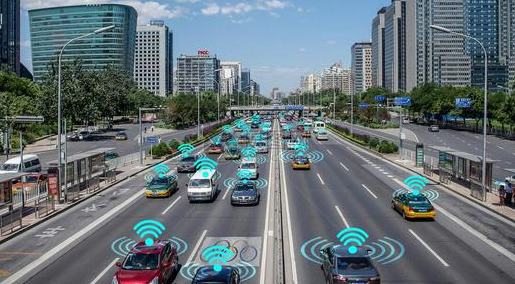Among the many IoT innovations tested in cities and regions around the world in recent years, smart transportation systems have moved from pilots to implementation, with promising success.
An ambitious project in the Netherlands now relies on hundreds of smart traffic signals to identify oncoming vehicles, helping ambulances get to their destinations safely and quickly and giving truckers advice on less congested routes , to help reduce pollution.
Transport platforms there allow Dutch drivers to communicate with the road environment via the internet via mobile phones or newer dashboard navigation systems. The Dutch government stated that the system reached more than 1 million users in 2018 and increased to 2.5 million users in 2020. Most recently, a city data access platform came online in January, providing a central repository where all information about smart mobility can be received and sent.
UDAP provides connections to traffic lights to keep emergency services a priority, but public buses and cyclists can also get priority at certain intersections. Traffic lights can also be adapted to optimize traffic flow.

A recent proposal also calls for adding 1,000 traffic signals to the existing 800 smart signals at a cost of €20 million, to be shared between city, provincial and federal governments.
According to estimates in 2018, as many as 3,000 traffic lights will be made intelligent in the next few years.
A primary goal of increasing the number of signals is to reduce crashes that occur when emergency vehicles are forced to run a red light on their way to the scene. There were 165 such incidents in 2018 and 2019. A full report evaluating SuccessTalkingTraffic is expected to be released in June, although comments from emergency vehicle drivers indicate that the system has “Big difference”.
He said the system helps emergency drivers cross intersections faster and means they are no longer forced to run red lights, which can effectively prevent legal obstacles.
The Netherlands’ nationwide smart transportation system creates vast amounts of data that must flow almost instantly from traffic signals and loop sensors in every lane every few miles.
To create a service center to collect traffic information, Dutch telecom giant KPN and the Dutch government began collaborating in 2016 with Klarrio, a company specializing in live streaming, data analysis and processing with a U.S. office in North Carolina. . The collaboration creates a streaming, cloud-native platform for real-time data processing, with the initial goal of reducing traffic congestion on busy roads by 20% and reducing travel times by 10%.
The link can handle communications between more than 5,000 traffic lights and 2 million cars, as well as 50,000 loop sensors, parking meters and public transportation. According to the Klarrio website, all the different groups using the hub manage their own applications within the hub, and the hub works securely with less than 200 milliseconds of latency.
Klarrio co-founder Jim Smith said the Dutch system could also track whether a bridge on one of the country’s many canals is functioning properly. In a fireside chat during the Internet of Things Technology Summit, Smith said Klarrio’s main challenge is ingesting a lot of data and then making sense of it in real time.
A system with 1,000 sensors is very small. He said: “This is complex millions or half a million devices. Klarrio hired a data science team to deal with a system that generated 1 petabyte of data in 6 months, which is equivalent to 11,000 4K movies, which would take 2.5 years to watch.
The Dutch ITS is not unique, although nationwide implementation of ITS is extremely rare. This system is deployed in the urban areas of many cities in the United States, and these areas are generally not connected to adjacent suburbs, counties, or states.
For example, Carlsbad, California, near San Diego, has deployed a parking and traffic management system with artificial intelligence that can adapt to changing conditions on the ground. He said at the same Internet of Things Summit: “The transportation management department is slowly starting to work and is moving towards greater mobility.” In the trend of smart cities, “this is a category that is coming into play.”
Keywords: modbus RTU